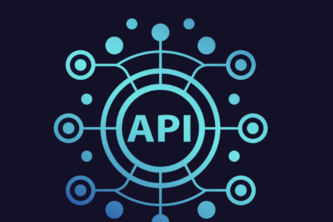How We Integrated WhatsApp & Instagram into CRM: A Success Story | Meta API Guide
Background
 When we started developing SmartTA CRM system for a travel agency, one of the main client requests was integration with popular messaging platforms. WhatsApp and Instagram Direct were particularly in demand – these communication channels had become integral to many businesses' operations. We knew it would be challenging, but we didn't realize just how complex the journey would be.
When we started developing SmartTA CRM system for a travel agency, one of the main client requests was integration with popular messaging platforms. WhatsApp and Instagram Direct were particularly in demand – these communication channels had become integral to many businesses' operations. We knew it would be challenging, but we didn't realize just how complex the journey would be.
First Steps and Obstacles
Documentation Deep Dive
Our first step was immersing ourselves in the Meta Business Platform documentation. It seemed straightforward – just get the API, integrate it, and you're done. However, reality proved quite different. We quickly discovered that working with WhatsApp Business API and Instagram Messaging API required a thorough business verification process and special permissions.
Business Account Setup
We started by creating a Meta Business Manager and verifying our company. This required:
- Company incorporation documents
- Address verification
- Brand rights documentation
- Company structure information
First Round of Verifications
WhatsApp Business API
When applying for WhatsApp Business API access, we encountered our first major challenge. Meta thoroughly scrutinizes companies wanting to use their API for business communications. We had to:
- Provide a detailed description of our business model
- Explain exactly how we planned to use the API
- Submit message and template examples
- Demonstrate our anti-spam protection mechanisms
Instagram Messaging API
The Instagram process proved equally challenging. We needed to:
- Verify rights to all accounts being integrated
- Pass a privacy policy review
- Obtain permissions for specific message types
Rejections and Improvements
Our first approval attempt was unsuccessful. Meta highlighted several issues:
- Insufficient detail in our moderation mechanisms
- Incomplete personal data processing policy
- Unclear user consent collection process
Instead of giving up, we focused on improvements:
- Developed a detailed content moderation policy
- Strengthened our personal data protection section
- Created step-by-step user guidelines
- Implemented robust consent collection and storage mechanisms
Second Round and Success
After implementing all changes, we submitted another application. The review process took about three weeks, during which we:
- Responded to additional questions from the review team
- Provided screenshots and documentation
- Conducted system demonstrations
Finally, we received the long-awaited approval! But this was just the beginning.
Technical Integration
WhatsApp Integration
The technical integration with WhatsApp required:
- Setting up webhook handlers
- Implementing a message template system
- Developing handlers for various content types
- Creating a conversation management system
Instagram Integration
For Instagram, we developed:
- An incoming message monitoring system
- Multi-account management mechanism
- Media content handling interface
- Automated response system
Results and Lessons Learned
The entire process, from initial work to full launch, took approximately 6 months. Key takeaways include:
- The importance of detailed documentation preparation
- The necessity of careful architecture planning
- The significance of transparent policies and procedures
- The value of persistence and attention to detail
Today, CRM SmartTA successfully works with both platforms, providing clients with a convenient tool for user communications. This experience taught us that when working with major platforms, patience is crucial, and you should be prepared for multiple improvement iterations.
Tips for Those Planning Similar Integration
- Start with thorough documentation review
- Prepare all necessary documents in advance
- Design your solution architecture before development begins
- Be prepared for a lengthy verification process
- Document all processes in detail
- Pay special attention to security and data protection
Integration with Meta is a complex but achievable journey. The key is to remain patient and be prepared to thoroughly work through all aspects of the solution.
Technical Considerations for Developers
For those embarking on a similar journey, here are some technical aspects to consider:
API Requirements
- Secure webhook endpoints (HTTPS required)
- Valid SSL certificates
- Rate limiting implementation
- Error handling mechanisms
- IPv6
Security Measures
- End-to-end encryption support
- Secure token storage
- User data protection mechanisms
- Regular security audits
Scalability Considerations
- Message queue implementation
- Load balancing setup
- Database optimization
- Caching mechanisms
Critical Infrastructure Requirements: IPv6 Support
One of the most crucial and often overlooked requirements for Meta API integration is IPv6 support on your server. This requirement caused us several unexpected challenges during the implementation phase.
Why IPv6 is Mandatory
Meta's infrastructure is gradually transitioning to IPv6, and there are several important reasons why they require IPv6 support:
Address Space Exhaustion
- IPv4's 32-bit address space (4.3 billion addresses) is depleted
- IPv6 provides 128-bit addressing, allowing for practically unlimited unique addresses
- Meta's massive infrastructure requires this expanded address space for scaling
Performance Benefits
- Direct IPv6 communication eliminates the need for NAT (Network Address Translation)
- Reduced latency in message delivery
- More efficient routing capabilities
Security Considerations
- IPv6 was designed with security in mind (IPSec is built-in)
- Better end-to-end integrity
- Enhanced ability to track and prevent abuse
Common Issues and Solutions
If your server lacks IPv6 support, you might encounter:
- Failed webhook deliveries
- Intermittent connection issues
- Increased latency
- Random message delivery failures
Remember that Meta's requirements are constantly evolving, so staying up-to-date with their documentation and policy changes is crucial for maintaining compliance and optimal functionality.